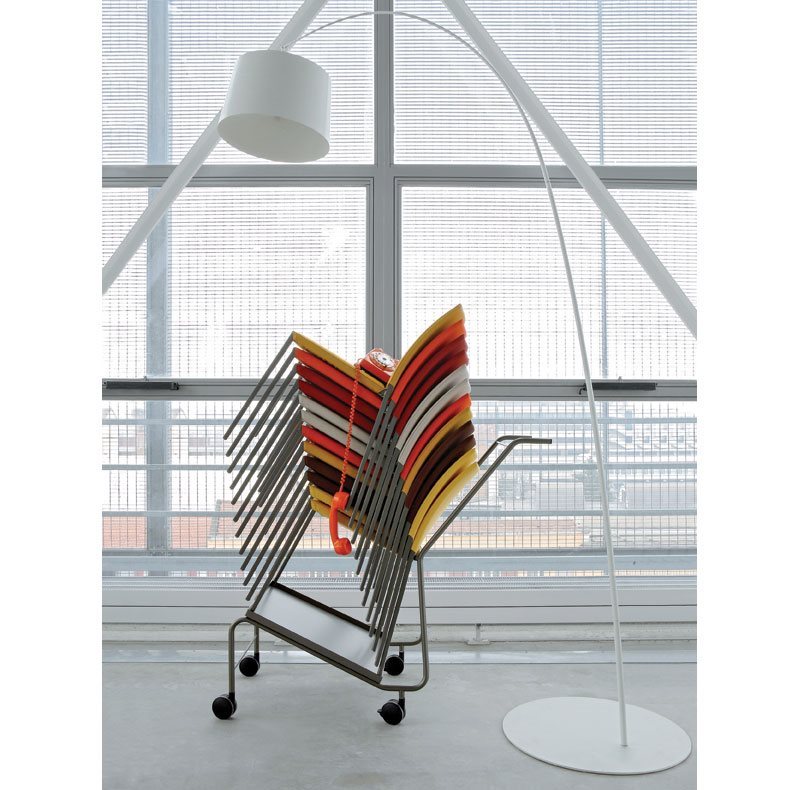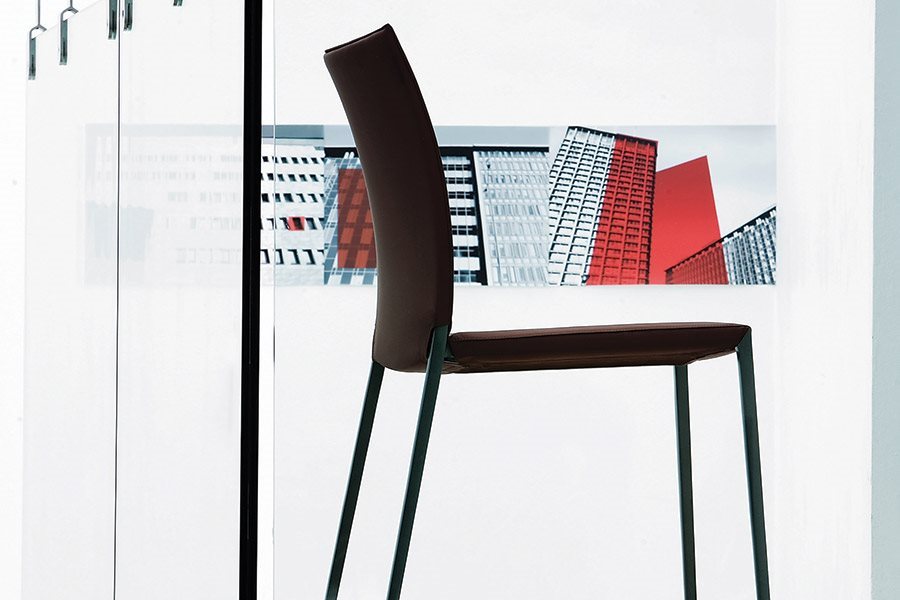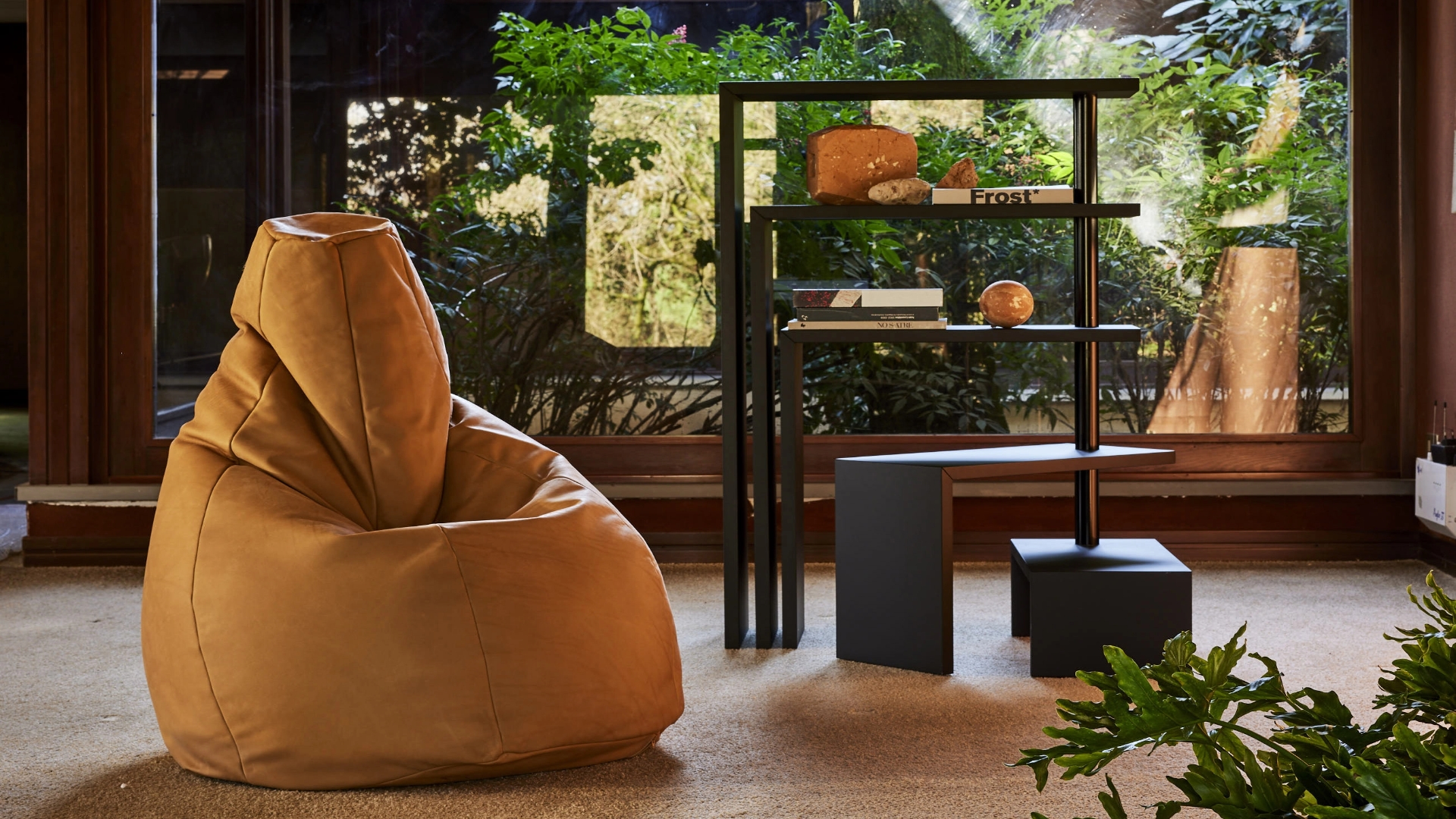Design by Roberto Barbieri
Talia is
the stackable version of the Lia chair. The Lia project dates back to 1998 (the
production dates back to 1999): almost ten years have gone by since this chair
was originally conceived. The entire period has been characterised by a
constant consensus regarding this model and this has led to the creation of a
family of chairs: first of all, the armchair with arm-rests, then the stool,
then the version with the high back and now Talia, which is destined for the
contract customer sector in particular». This is how the designer Roberto
Barbieri summarises the genesis of his latest design for Zanotta from a
chronological and conceptual point of view: the stackable Talia chair is even
more flexible than the previous Lia model and just as comfortable and it also
has an extra feature. It can be stacked and transported on trolleys and it can
also be stored in a small space when necessary. Lots of minute variations in
thicknesses and many adjustments led to the birth of Talia: «the substantial
change lies in the distance between the back legs of the chair, which has been
increased to allow for practical stacking», Barbieri points out with the
modesty that is so typical of refined designers, he then continues: «The
company paid particular attention to a certain demand from the market for this
choice. The fact that this chair could be stacked was already considered during
the initial phases of the design which is founded on a simple idea: a side
panel made with pressure die-cast aluminium as the characterising element of
the image of the object. A single piece, without welding or assemblies, that
might guarantee the necessary strength with contained widths and a particularly
simple and understated figurative result». A small exemplary story, made of
progressive phases and an alternation of technical and morphological
innovations. A project that, like all well done projects, implicates the
constant commitment of the parties: the designer who pre-represents the object
and outlines its main characteristics, the technical office that gives a form
to the product and the entrepreneur who gives space to these parties and
defines the production cycle. The more wideranging the vision, the longer the
life of the object. Barbieri adds: «The initial proposal involved the use of a
plastic body. The idea of a side panel made like this and its design immediately
appealed to the company which did however express its perplexity about the use
of plastic. And so we found ourselves faced with an alternative: on the one
hand a plastic chair with a slightly high cost that would need to be modified
to make it stackable. On the other hand the chair that was then made, padded
and upholstered, more comfortable and more elegant. I believe that the
Zanotta’s choice had a significant part to play in the success of the product.
I tried to upholster it with a cover that was supposed to appear “thrown on” in
a non-conventional manner in order to set off the side panel somewhat. During
this phase I received enormous help from the customary efficiency of the
technical office and the ability of the upholsterer, who used a machine that
had been out of use for years and that was originally used to sew boots to come
up with the hide upholstering”.


